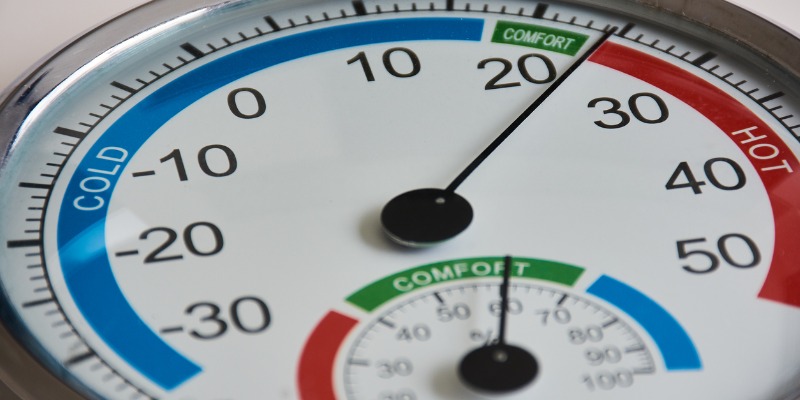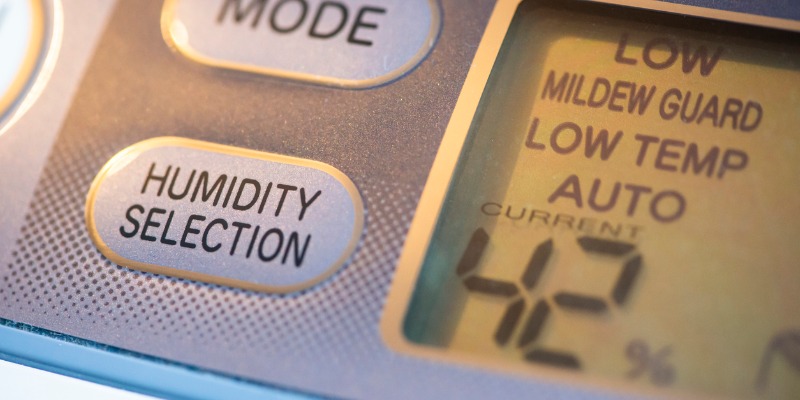
Have you ever thought about using your air conditioner to reduce humidity? You may also wonder how much humidity an air conditioner can remove or if it’s better to run your AC constantly to help remove humidity. Let’s look at some of the main reasons why humidity is a problem in the first place.
If your home isn’t properly insulated, weather-sealed, or well ventilated, it may have excess humidity. Extra moisture can make your home feel much hotter than it actually is. It can not only affect the structure of your house, and impact the health of you and your family, but it can also encourage mold growth.
Read on to discover how to control humidity with your air conditioner, no matter the season.
Using Air Conditioner to Reduce Humidity
In the summer when the outside temperature is high, and humidity rises, use your air conditioner humidity setting (setting your AC to cooling mode) to reduce your home’s overall temperature and encourage humidity levels to drop.
If your home feels damp with the AC on, it could be a maintenance problem. When your AC filter is clogged, it traps moisture inside the air conditioning ducts, which can lead to mould and other harmful airborne bacteria. Change your AC filter once a month to help avoid this issue.
Additionally, stay on top of air conditioning maintenance and get your AC system serviced once a year. This annual check-up allows technicians to spot potential problems that can cause high humidity and other issues early on before they lead to bigger troubles down the line.
Use Your Air Conditioner Without Cooling the Home
During spring and autumn, instead of using the cooling setting, set the temperature 2-3°C less than the current comfortable temperature. If you combine this with low fan speed, you can effectively dry the air without cooling it. (Dry mode, your air conditioner’s humidity setting, can also do this.)
Make sure your thermostat fan setting is on the “auto” position instead of “on.” Your AC system will run the fan only when necessary to keep your indoor air temperature at the level you choose.
It will also let the condensation that collects on the evaporator coil to drain out of the unit as intended. The ‘on’ position causes condensation to blow back into circulation (causing persistent humidity) and makes your house feel damp with the AC on.

Add a Dehumidifier
Use your AC in conjunction with a dehumidifier to significantly reduce moisture from the air. Dehumidifiers are similar to air conditioners, but they’re optimized for absorbing moisture instead of heat. You can make your home feel up to 10 degrees cooler by running one in tandem with your AC unit.
Keep an eye on humidity levels in your home and use your air conditioner to reduce humidity. For more information about your AC settings and how to reduce humidity in your home, contact the HVAC specialists at Advantage Airtech ClimateCare.







